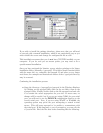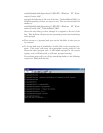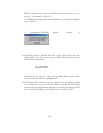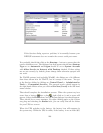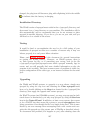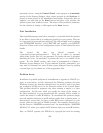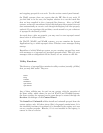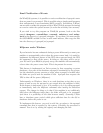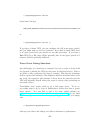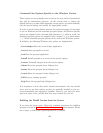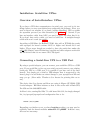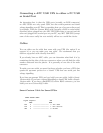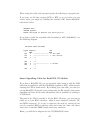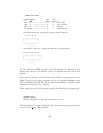The functions of Stop, ups-events, and ups-status can be more easily
invoked by right clicking on the apcupsd icon in the system tray and selecting
the desired function from the popup menu.
Disclaimer
Some of the features such as EEPROM programming have not been exhaus-
tively tested on Win32 systems. If at all possible, we recommend not to use
it as a network master on Win95, Win98, and WinMe due to the instability
of those operating systems.
Some items to note:
• This version of apcupsd will not attempt to shut off the UPS power
when the battery is exhausted. Thus if the power returns before the
UPS completely shuts down, your computer may not reboot automat-
ically. This is because we do not know how to regain control after the
disks have been synced in order to shut off the UPS power.
Nevertheless, it is possible to use the --kill-on-powerfail option
on the apcupsd command line, but the use of this option could
cause the power to be cut off while your machine is still running.
See Shutdown Sequence of this document for a more complete dis-
cussion of this subject. If you are still interested in trying to get
this to work, please look at the code that is commented out in
c:\apcupsd\etc\apcupsd\apccontrol under the doshutdown case.
An alternative to the --kill-on-powerfail option is to use the
KILLDELAY (see KILLDELAY <time in seconds>) configuration di-
rective.
This configuration directive is appropriate on Windows machines
where apcupsd continues to run even when the machine is halted (as
is the case on most NT machines).
• When apcupsd detects important events, it calls
c:\apcupsd\etc\apcupsd\apccontrol, which is a Unix shell script.
You may modify this script to suit your particular needs. Currently,
it puts a Windows dialogue on the screen with a brief explanation of
the event. If these dialogues annoy you, you can remove or comment
out the calls to popup from this file.
131



